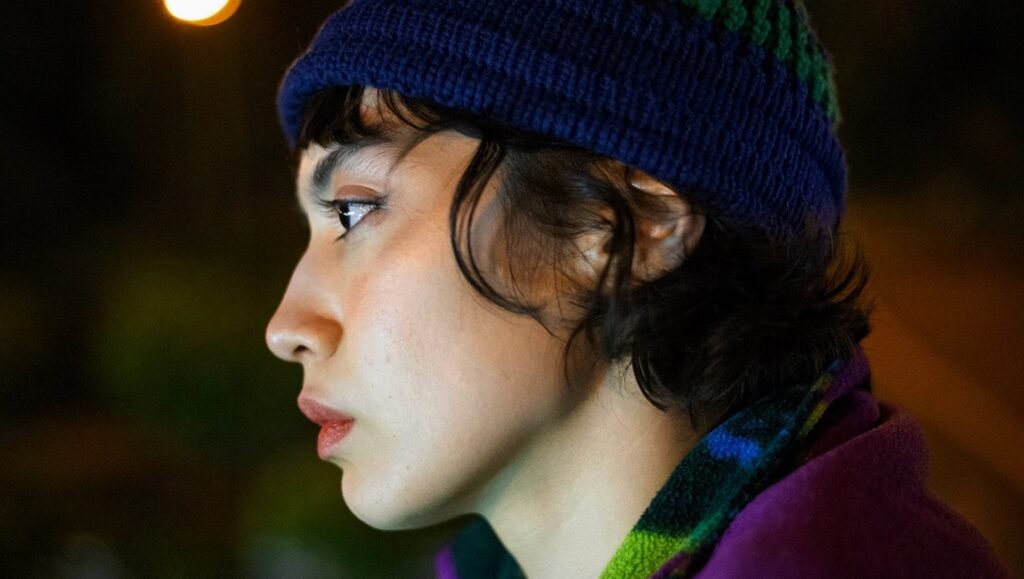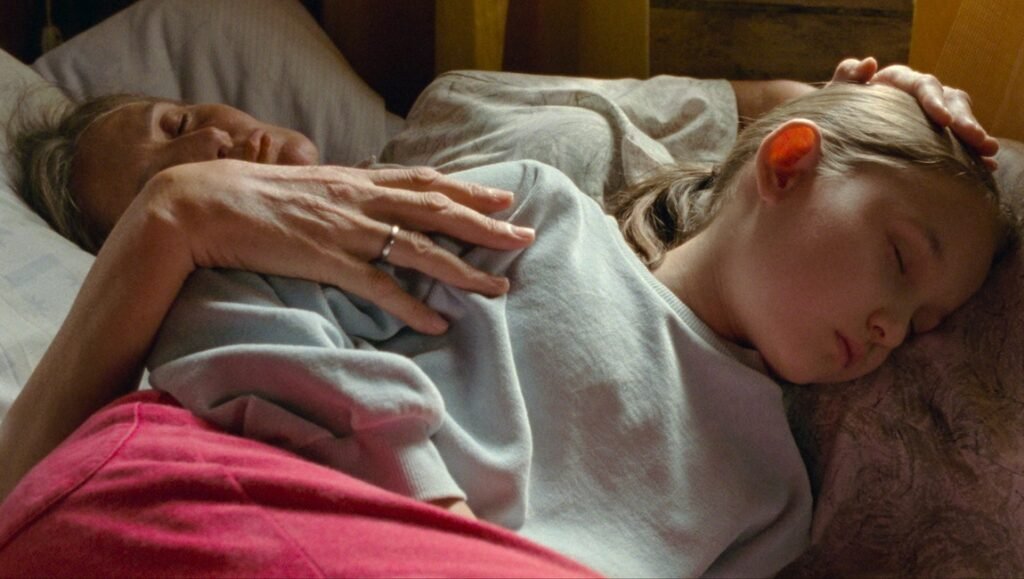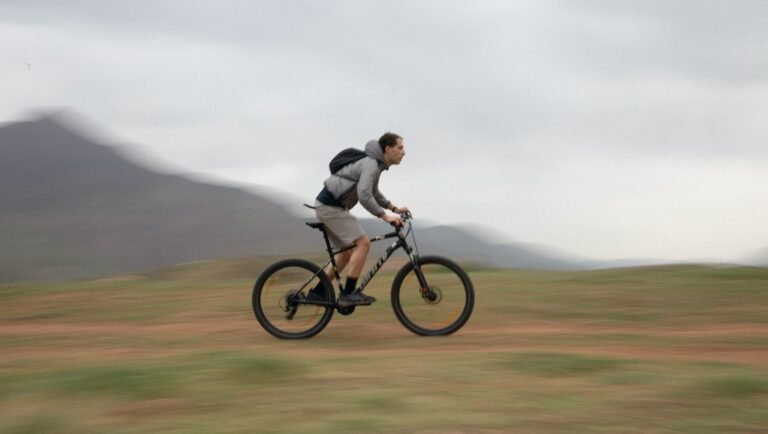Back Home
Tsai Ming-liang ‘s latest sketchbook entry concerns his frequent star and collaborator Anong Houngheuangsy returning to his village in Laos, where he interacts with his family, Surat Houngheuangsy, Wijit Houngheuangsy, & Wankaew Houngheuangsy. Like the Paris’ Centre Pompidou Museum’s Où en êtes-vous? series or the Jeonju Film Festival Digital Shorts program that Tsai has contributed to in the past, Back Home is a small, even minor, entry in his body of work. But it’s precisely this “smallness” that makes the work so valuable. Tsai’s Walker series, over a decade in the mking, has already eschewed as much as the prestige festival circuit as is possible for a revered international auteur, and with works like Where are You, Tsai Ming-Liang?, Light, and (the much older) A Conversation With God, Tsai seems more than content to create non-commercial oddities that tickle his fancy, if no one else’s. These films won’t win any big prizes, but they are the sort of intermediate works that can help further elucidate the artist’s worldview for admirers. Like a novelist’s letters or the great painter’s charcoal sketches, inviting us into the process of thinking through ideas is sometimes as valuable as the end product. It’s a kind of invaluable intimacy.
Back Home begins with Tsai filming from the inside of a moving car. We see the road whizzing by outside, streetlights, and other trappings of urban density. He cuts to Anong asleep in the seat next to him, the lo-fi digital images replete with smeary artifacts and fuzzy blacks. This is our introduction to their return, although we’ll never learn exactly where or what they are traveling from (perhaps the glitz and bright lights of a special presentation or retrospective series of some sort). What follows is not any sort of traditional narrative; Anong doesn’t appear in many of the film’s shots, and there are only two brief dialogue sequences in the entire 60-minute runtime (neither of which are subtitled for non-native speakers). The film is instead a series of sensory impressions, discrete shots that all eventually add up to a slightly abstracted portrait of this particular time and place. Anong prepares food in ( what is presumably) the family home; children fly about on a whirling carnival ride while a dog attempts to flee between the quickly moving carts; a man tends a fire; workers carve, sand down, polish, and paint large Buddha head statues. But lest the compositions veer toward the one-note, there are also many shots of vast landscapes, rice paddies, natural rock formations, flowing streams, and any number of innately beautiful images.
It all amounts to a kind of moving image scrapbook, a travelogue of Tsai visiting this place and soaking in its rhythms. Critic Nick Pinkerton has called Tsai “a filmmaker of cities,” which is undoubtedly true — few have done more to chart the alienation of large urban spaces and late-stage capitalism in the late 20th and early 21st century. So it has been fascinating to see Tsai embrace the rural in recent years, as if he is exploring different modes and methods of being. One of Tsai’s earliest features is titled Give Me a Home, and it follows a family living in a construction work site desperately striving for a proper house in a vast urban space. That dream is likely impossible now for a huge swath of the population in any country, as modernity has progressed and left many of us behind. Back Home suggests, then, a different way of living, away from the hustle of the city and more closely attuned to nature. A dream, perhaps, and likely unrealistic for many people. But movies are made for showing us dreams. — DANIEL GORMAN

Inside Amir
Just as the prospect of taking root in one place imposes an uneasiness on the mind, so too does relocation prompt a restlessness of the soul. Neither are absolutes: habituation, some would say, determines the rigor of both provincial and cosmopolitan sensibilities. But what is clear to most émigrés — whether political, spiritual, economic, or merely circumstantial — is the anticipation that precedes and comes to define the move. Inside Amir, Amir Azizi’s second feature, touts a tender and introspective point of view, encircling its titular protagonist in a routine of wistful reminiscences and bittersweet encounters as he prepares to leave Tehran for the south of Italy. While Amir’s (Amirhossein Hosseini) girlfriend, Tara (Hadis Nazari), has already moved there to study and awaits his arrival, the sullen young man attends to the complex emotional strata awaiting his uncovering. Leaving one home in search of another brings forth not so much an emotional rupture as it does a hanging, uncertain rift.
Drawn largely to his protagonist’s inner state of mind, Azizi trains his lens on the quotidian habits and happenings under way as Amir rides to and from familiar spaces around the city. His bicycle, an extension of him, underscores the youth’s disaffection with and affirmation of youthful life: while a lack of experience abroad threatens to paralyze him, the notion of staying put — and not knowing — obliges him to wander. In between lunches and casual meet-ups with his friends Nader (Nader Pourmahin) and Nariman (Nariman Farrokhi), Inside Amir concocts an uplifting portrait of Tehran’s everyday denizens, some of whom have moved away before while others have adapted to life’s routine pressures anyhow. When Nader recounts the depressive depths of his four-year sojourn in Brazil, or when Amir’s uncle (Sohrab Mahdavi) cautions against the seductive pleasures of a foreign land (New York, in his case), Amir listens, rapt with attentiveness. Each revelation only cements the realization that, short of experiencing these for himself, he would never really know.
Tethered to a low-key register meshing harpsichord melodies with Iranian tunes, Inside Amir also sweetly documents the comforts of home, vindicating the bustling, all-too-human cityscapes of Tehran against their frequently politicized caricatures as stultifying and oppressive backwaters. Amir has two cats, each with one eye; like the physical distance between him and Tara, no seeing is complete without some degree of coordination, some semblance of coming together. And yet the distance paradoxically breeds closeness: traversing the nights and days around old haunts, Amir relives his early days of courtship, basks in the glow of backgammon rounds and afternoon naps with his compatriots, and awaits the moment when what is inside him will be dispatched outward. “People can be moved around like nothing; but none of these buildings will ever move,” suggests Tara, herself initially resistant to leaving her friends behind. For now, the nostalgia and heartbreak are confined to the future; when they manifest and become real, he will venture forth as she did, knowing some piece of home remains close, in his heart. — MORRIS YANG
Human Resource
The grist mill of capitalism has no shortage of critics today, incisive policymakers and inane pedants alike who know too well the anonymous and alienated husks that socioeconomic precarity turns us all into, but who, aside from recourse to the tried-and-tested dispatches of cynicism, have little new to say. Perhaps this is by design in a system that pits individuals against unerring market forces and, by extension, favors manic sentiment over measured reason; perhaps Mark Fisher was right when he wrote in Capitalist Realism of the “massive desacralization of culture,” in which neoliberal imagination falters under the guise of first-world consumer freedom. Regardless, this freedom comes undone most acutely in the corporate backrooms of HR, where the bullshitters themselves steer clear of their own product as they survey index after index of aspiring workers. The freedom to choose your job and enter into capitalist relations, being caveated by an alternative of certain starvation, is never quite freedom in the truest sense.
Human resources is thus a department uncannily attuned to the travails of modern working life, and consequently its focus in Nawapol Thamrongrattanarit’s ninth feature warrants closer look. Within the nested environs of corporate Bangkok, recruiter Fren (Prapamonton Eiamchan) contemplates the reality of her middle-class dream as she anticipates the birth of her child. Drifting through training seminars replete with corporate-speak and filled with a simmering urgency to find the replacement for a colleague who up and went, she winds up as a silent protagonist, her face pensive and ready, at a moment’s notice, to implode. Much of Human Resource, in fact, abounds with an implosive impulse: from a bully superior (Varinton Yaroojjanont) whose remit extends even to HR, to an uneasy first trimester spent with her well-meaning but distant husband Thame (Paopetch Charoensook), Fren’s despondent outlook gradually approximates that of her fellow recruiter Tenn (Chanakan Rattana-Udom), whose all-too-jovial mask lets slip on occasion in their professional interviews.
One such interview leads to Jida (Pimmada Chaisaksoen), a quiet young woman with an indomitable spirit battered into her, getting the job. Almost right after, a minor car accident forces Fren to reveal her pregnancy to Thame and thereby forecloses any furtive possibility of abortion. The couple ease into the logistics of starting a nuclear family (polite dinner celebrations with Thame’s business clients, waitlists — years in advance! — for elite private schools, visits to mom, etc.), every frame of Thamrongrattanarit’s aseptic film a well of repressed gloom. While its depressive atmosphere no doubt remains integral to Human Resource, one can’t help but feel boxed in stylistically by a work eager to play it safe and complete the checklist of themes and tones. A road rage episode illustrates a certain helplessness of the working middle; a film filled to the brim with familiar pastiches bristles with certain boredom. As it skitters into a series of inoffensive longueurs, nonetheless, its title bears unpacking. Human resource as singular could imply a finitude of resources, a precarious little thing, or it could exalt the unavailing resourcefulness intrinsic to humanity. “We didn’t force her into it,” Fren comforts Tenn as they prepare to hire Jida. That’s a resourcefulness of language alright, but exploited in one too many consolation. — MORRIS YANG

Short Summer
With Short Summer, writer/director Nastia Korkia has created an exquisite, evocative portrait of a rapidly disintegrating world told almost entirely through the eyes of a child. There’s not much plot here, and even less dialogue, as Korkia and cinematographer Evgeny Rodin instead construct moments of impressionistic immersion — the way sunlight reflects off of a piece of glass and streams through curtains, a body lying prone on an old bed, a quiet reverie while hiking through the woods.
Eight-year-old Katya (Maiia Pleshkevich) has travelled with her grandparents to their summer home in the Russian countryside. But conflict with Chechnya is raging somewhere just beyond their borders, and intimations of the war seep into the family’s day-to-day life in subtle yet devastating ways. Katya runs around with other kids who live in the area year-round, those kinds of friends one only encounters annually on vacation, and they do what all children do: play hide-and-seek, toss around balls, go exploring. But the games they play also reveal the world that exists just beyond the periphery of their understanding. The boys pretend to be soldiers guarding a checkpoint, demanding papers from grandpa as the family first arrives in town (he plays along politely). Later. a long, static master shot of an afternoon ball game reveals a slow-moving freight train hauling tanks and armored personnel carriers either to or from the frontlines, while the soundtrack fills with the ambient sounds of radios constantly broadcasting new reports about missing soldiers.
A story does eventually emerge from Korkia’s gradual accumulation of discrete vignettes, filling in at least some details of these people’s lives. The grandparents are in the midst of a divorce, and while Katya doesn’t necessarily understand the concept, she does recognize that there is an acrimonious mood infiltrating their shared home. Grandfather shows her how to pick mushrooms and clean them, a long sequence shot in loving, tactile detail. But grandfather also dodges Korkia’s innocent inquiries about the state of things, instead instructing her on how to spot worms in the mushroom stalk and cut them out. Grandmother lays about, silently, seemingly overcome by sadness, and Katya often lays with her in quiet solidarity. At one point, Katya travels with grandfather to the nearby town, and we get a glimpse of a lively marketplace and bustling crowds. But even here, the banality of state bureaucracy butts up against Katya’s otherwise carefree summer escapades, as we witness the long process of trying to acquire the official paperwork to file for legal separation.
Interspersed throughout these snippets of narrative are long, languid sequences of children frolicking and exploring, although signs of impending disaster are still hovering around in the margins. As the children take a trip through the woods, one of them talks about how the path they’re on has only recently become accessible because the water level from the nearby lake has gotten so low. These kids don’t know, or care, about global warming, but its effects will shape their lives in ways they can’t imagine. Later, Katya will explore a huge concrete cistern that the children discover on one of their adventures, and the film becomes a kind dark, abstract journey into the unknown, as Katya pushes further and further into the recesses of the huge structure. For the kids, it’s still possible to be amazed by the everyday, quotidian things adults take for granted. (While Katya explores, we hear but do not see two people having very loud sex. She does not recognize or register what’s happening, transfixed instead on her own journey into the unknown). All of this is captured in long, mostly static takes. Korkia’s compositions sometimes resemble portraiture, and many scenes feel like a kind of Proustian reverie of a recent past. It’s unclear if any of this is autobiographical, but the film has the undeniably lived-in feel of actual memories. Short Summer is a remarkable achievement, a deeply moving exploration of innocence hovering on the edge of painful experience. — DANIEL GORMAN


Comments are closed.